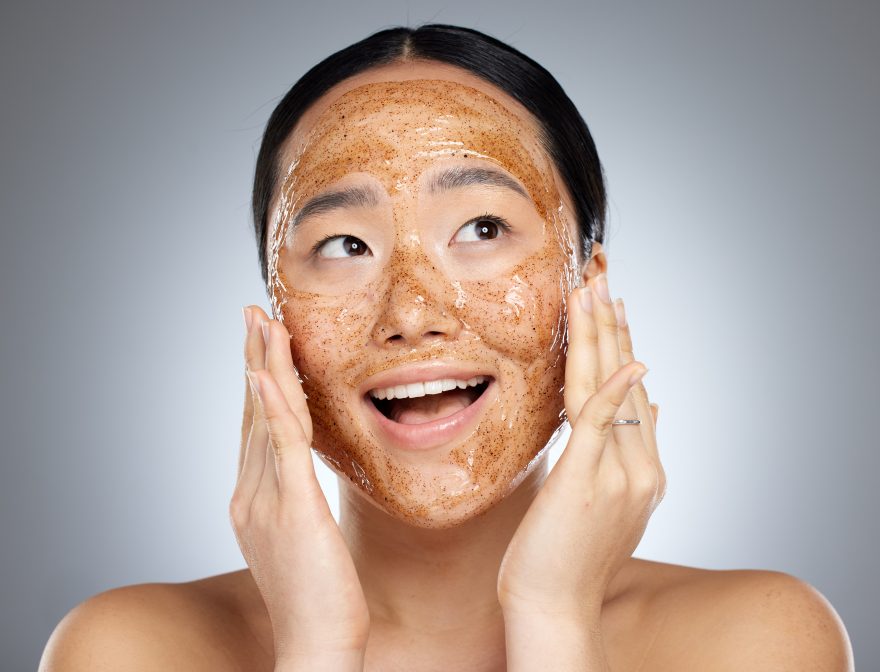In the quest for healthy, radiant skin, the balance between exfoliation and pore minimization plays a pivotal role. Skincare enthusiasts are often caught between the desire for smoother, more even skin and the potential risks of overdoing it. Finding the right equilibrium is essential for achieving glowing, youthful skin. In this blog post, we will explore the world of exfoliation and pore minimization and guide you on how to strike the perfect balance for your skin.
Understanding Exfoliation
Exfoliation is the process of removing dead skin cells from the surface of your skin. It’s a fundamental step in any skincare routine, and for good reason.
Benefits of Exfoliation:
- Dead Skin Cell Removal: Over time, dead skin cells can accumulate on the skin’s surface, leading to a dull complexion. Exfoliation helps slough away these cells, revealing fresh, healthy skin underneath.
- Improved Skin Texture: Exfoliation can smooth out rough patches, leaving your skin feeling soft and velvety.
- Enhanced Product Absorption: When you exfoliate, your skin is better prepared to absorb serums, moisturizers, and other products, maximizing their effectiveness.
Types of Exfoliation:
- Physical Exfoliation: This involves using products with physical particles like sugar, salt, or microbeads to manually remove dead skin cells.
- Chemical Exfoliation: This method uses acids, such as alpha hydroxy acids (AHAs) and beta hydroxy acids (BHAs), to dissolve dead skin cells.
Pore Minimization
Pores are tiny openings on the surface of your skin that can sometimes become more prominent due to various factors.
Factors Contributing to Enlarged Pores:
- Excessive Sebum Production: When your skin produces too much oil, it can accumulate in pores, making them appear larger.
- Aging: As we age, the skin’s elasticity decreases, causing pores to look more prominent.
- Sun Damage: Sun exposure can damage collagen, contributing to larger pores.
- Clogged Pores: When pores get clogged with dirt and debris, they can expand.
Goals of Pore Minimization:
- Reducing the Appearance of Pores: The aim is to make your pores less visible, creating a smoother, more even complexion.
- Preventing Pore Blockages: By keeping your pores clean and free of debris, you can reduce the risk of breakouts and inflammation.
- Achieving Smoother Skin: When pores are less noticeable, your skin looks more refined and youthful.
The Balancing Act
Achieving the right balance between exfoliation and pore minimization is crucial. While exfoliation can be incredibly beneficial, overdoing it can have the opposite effect. Excessive exfoliation can strip the skin of its natural oils, leading to irritation, redness, and even larger pores. To find the balance that works for you, it’s essential to understand your skin type and its specific needs.
Finding Your Balance
- Skin Type Assessment: Determine your skin type (e.g., oily, dry, combination) to tailor your skincare routine accordingly.
- Create a Personalized Skincare Routine: Customize your routine by choosing exfoliation methods and pore-minimizing products that suit your skin type.
- Consult a Dermatologist: For a professional assessment and personalized recommendations, consider visiting a dermatologist or skincare professional.
Recommended Products and Ingredients
When it comes to exfoliation and pore minimization, several products and ingredients have gained popularity for their effectiveness.
Exfoliating Products:
- Glycolic Acid: A type of AHA, glycolic acid helps improve skin texture and reduce the appearance of pores.
- Salicylic Acid: A BHA that’s particularly effective at unclogging pores and reducing inflammation.
- Exfoliating Scrubs: Choose products with gentle exfoliants like microbeads or sugar for physical exfoliation.
Pore-Minimizing Ingredients:
- Niacinamide: This versatile ingredient can help tighten and minimize the appearance of pores.
- Retinoids: These vitamin A derivatives promote collagen production, which can make pores look smaller.
- Hyaluronic Acid: Hydration is key to plumping the skin and reducing the appearance of pores.
Remember always to perform a patch test when trying new products to ensure they’re suitable for your skin.
Best Practices for Exfoliation and Pore Minimization
Here’s a simple step-by-step skincare routine to help you balance exfoliation and pore minimization:
- Cleansing: Start with a gentle cleanser to remove dirt and makeup.
- Exfoliation: Use an exfoliant (either physical or chemical) as recommended for your skin type, but not more than 2-3 times a week.
- Pore Minimization: Apply pore-minimizing products like serums or creams to target specific concerns.
- Moisturizing: Hydrate your skin with a suitable moisturizer.
- Sun Protection: Finish with a broad-spectrum sunscreen to protect your skin from UV damage.
Common Myths and Misconceptions
- Myth: Exfoliating daily is better for your skin.
- Fact: Over-exfoliation can damage the skin’s protective barrier and lead to issues like increased pore size.
- Myth: Pores can be permanently shrunk.
- Fact: Pores can’t be permanently changed in size, but their appearance can be minimized with proper care.
Troubleshooting Common Issues
If you encounter issues like excessive dryness or irritation, adjust your skincare routine by reducing exfoliation frequency or changing products. It’s crucial to listen to your skin’s needs and make modifications as necessary.
Conclusion
Balancing exfoliation and pore minimization is an essential part of achieving the glowing, youthful skin you desire. By understanding your skin type, choosing the right products, and practicing a consistent skincare routine, you can find that perfect balance and enjoy healthy, beautiful skin.
When it comes to tackling enlarged pores and achieving flawless skin, Cosmos Clinic stands out as the unrivaled expert in the field, offering unparalleled expertise and results.




